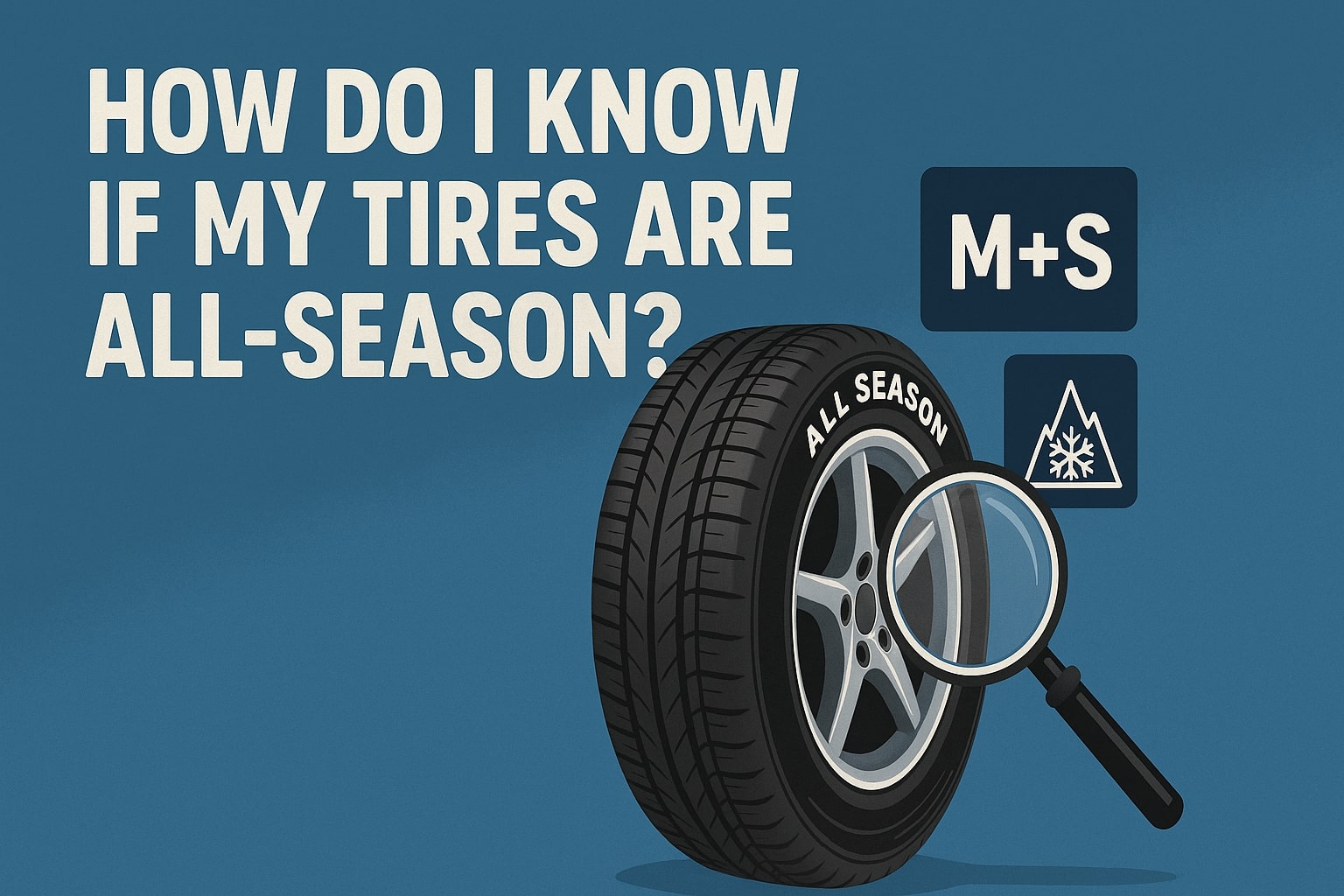Last Updated on August 10, 2025 by Tom
So, you’re wondering “How can I tell if my tires are all season?” Don’t worry, you’re not alone – and have come to the right place. Perhaps you’ve recently bought a used car with some unknown tires on it, or you’re just getting ready for a change in the weather. In either case, knowing what kind of tires you have on your car is essential for safety reasons.
Fortunately, it’s not at all difficult to figure out whether your tires are all season or not. There are actually a couple of different ways to quickly find it out. Let’s see them!
1. Read the Sidewall Markings
The answer should actually be on the sidewall of your tire. The sidewall is the outside of the tire, the part that faces outward from the wheel. Here’s what to look for:
- “All Season” or “A/S” – many tire makers engrave this info directly into the tire.
- “M+S” or “M&S” – This means “Mud and Snow.” It’s typical of all-season tires to have these letters put on them. M&S represents basic traction in mild winter weather.
- No Three-Peak Mountain Snowflake symbol (3PMSF) – An all-season tire typically doesn’t have a 3PMSF symbol on it. This symbol can be found on dedicated snow tires and all-weather tires but rarely on all season tires.
Note: Probably, you will also see numbers and letters like “205/55R16” and other specs (load index, speed rating etc.), but those codes don’t indicate the seasonality of the tire.
2. Take a Closer Look at the Tread Pattern

If you know what you’re doing, you should be able to identify an all-season tire based on its tread pattern, too. Here’s what you should look for – with some visual aids.
- The model is symmetrical or asymmetrical.
- There are thin slits (sipes) on it that add grip in light snow or rain, but not as many or as deep as on winter tires.
- The tread will not be chunky or aggressive similar to off-road or snow tires.
- The average all-season tread depth is 8-10/32″ when brand new, whereas winter tires often start with more than 11/32″.
Bonus tip: Once you’re sure that your tires are all-season, you should check out our in-depth guide where we discuss everything worth knowing about this type of car tires.
3. Look Up the Tire Model Name
In case none of the previous methods work, it’s time to take your phone out of your pocket and do some quick research online. Each tire has a model name stamped on the side of it. For example:
- Michelin Defender T+H
- Goodyear Assurance WeatherReady
- Continental TrueContact Tour
Once you’ve found the brand and model name of your tires, head to Google:
- Google the tire brand + model (for example, “Goodyear Assurance WeatherReady”)
- Go to the manufacturer’s website or a reputable tire webshop like Tire Rack or SimpleTire and check the type of your tires. The best source of information is always the official website of the given tire – but in case of older, discontinued tires it may happen that they have already been removed from the official webpage.
Any of these sources should tell you whether you’re dealing with all-season, summer, winter, or all-weather tires.
Bonus tip: If you’re wondering whether your car had all season tires in the first place, check out this article on whether new cars come with all-season tires.
4. Still Not Sure? Ask a Tire Shop
If the marks are missing or you don’t trust your ability to read them, head to a nearby tire store or dealership. Any technician can easily tell you the type of your tires just by looking at it. They will often do so for free as a courtesy.
Bonus Tip: Try a Tire Lookup Tool
Specific platforms such as Discount Tire, SimpleTire, or even a dealership tool, will allow you to input your VIN or license plate to look up your current tires, assuming they were from a dealer or bought online.
Though that’s not always true with used cars, it might help provide a head start.
Final Thoughts
Now you know all the different ways to get to know whether you’ve got all season tires on your vehicle or not.
If you are looking to buy a new set of tires don’t forget: all-season tires provide a performance balance between summer and winter tires for mild to moderate weather conditions – so they are the ideal choice for most.
But if you live in an area with significant snowfall or icy winters, you should probably spring for a set of all-weather tires or even more ideal, dedicated winter tires for total peace of mind.

